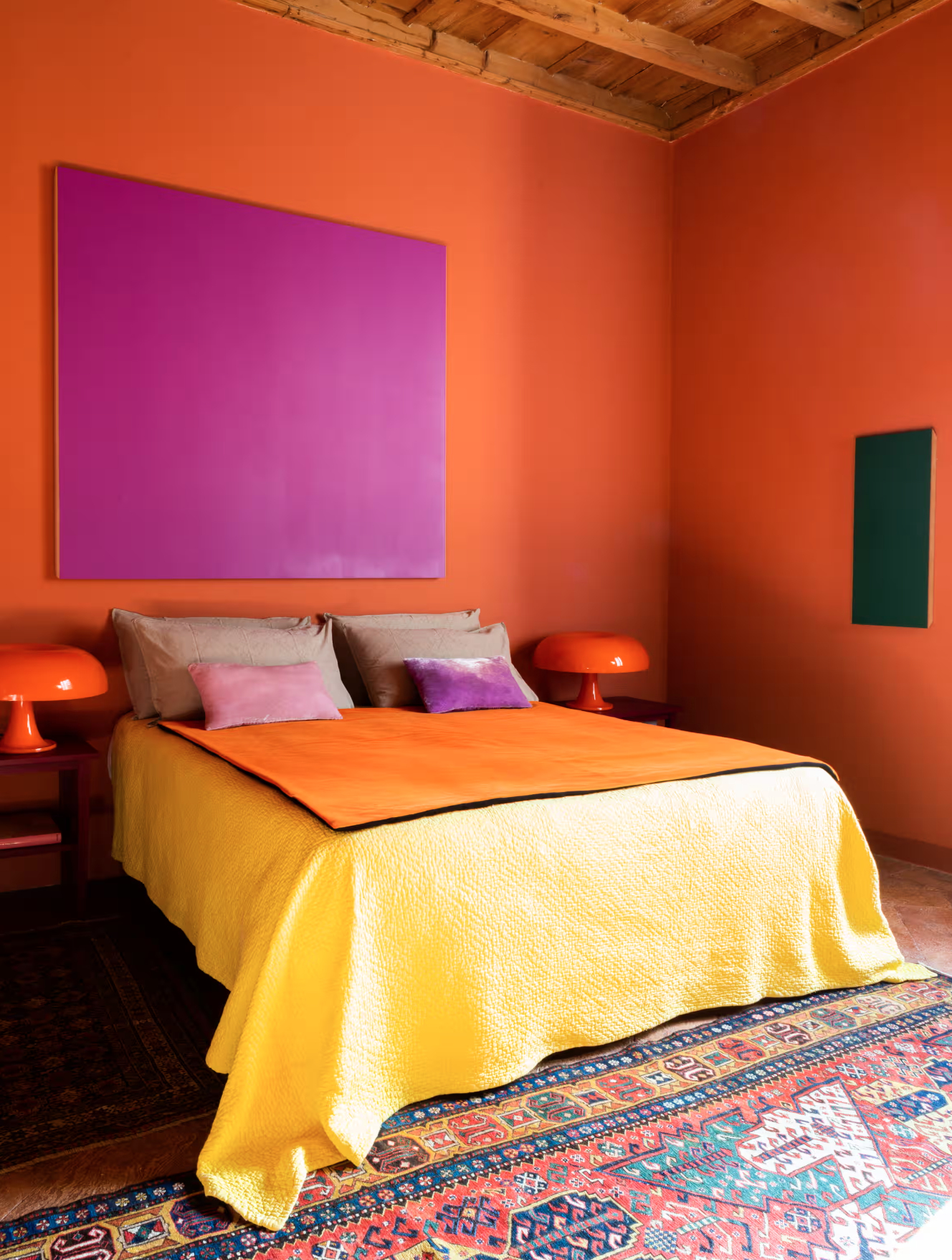Warm Wood Panelled Interiors
Wood paneling offers a timeless beauty that combines natural warmth with architectural elegance. Its appeal lies in both its aesthetic qualities and practical benefits!
This 19th century beachfront residence in the Hamptons was designed by Jonathan Sheffer, Jack Ceglic and architect Manuel Fernandez-Casteleiro. Photos by Tim Williams for Architectural Digest
Let’s talk about natural aesthetics. Wood paneling brings a sense of nature indoors, with its grains, knots, and varying tones creating a visually appealing backdrop. It adds depth and texture to a room, often becoming a focal point or enhancing the overall ambiance.
The fireplace of the Foster-Carling House by architect John Lautner (1947-1950) Delicately restored by Mark Haddawy. The original wood pannelling paired with textured brick and what seems to be fluted ceramic tile creates a delicious harmony between materials. Add the ultra-cozy sheepskin to the picture and that’s the cherry on top.
Panelling is also quite versatile! Available in different types of wood (like oak, walnut, pine) and finishes (stained, painted, or natural), wood paneling suits various interior styles—from rustic to contemporary. It can be customized to match specific design preferences or historical contexts.
This stunning pair of photos comes from an 1896 waterfront property on the outskirts of Syndey, Australia. Owner, Richard Unsworth carefully restored the historic home, adding layers of personality. Photography by Anson Smart
My favorite aspect is the warmth and comfort that panelling brings us. Unlike cold, sterile walls, wood paneling offers a cozy atmosphere. Its natural insulating properties can contribute to maintaining a comfortable room temperature and reducing noise levels.
Cayley Lambur’s Big Sur home features stunning redwood interiors. It was her first priority to maintain renowned architect Mickey Muennig’s original organic vision of the California home. She did not disappoint. The home consists of earthy natural palettes that seamlessly blend in with the warm textured wood panelling. Photography by Chris Mottalini for Architectural Digest
Moving on to, durability. Properly maintained wood paneling can last for generations, aging gracefully and gaining character over time. It's resistant to wear and tear, making it a sustainable choice for interior design.
The Emmons House by Donn Emmons in Mill Valley, 1949. Reading nooks and lofty books are the hallmarks of this dreamy home. The warm blonde wood panelling wraps around each space, almost like a big hug. Photography by Matthew Millman
Not to mention, the acoustic benefits that come with this design choice. Wood panels can help absorb sound, making them ideal for spaces where acoustics matter, such as libraries, offices, living rooms or lofts like the one above!
Schaffer Residence by John Lautner in Glendale, California, 1948. Husband-and-wife team Alice Park and Michael McDonal of Los Angeles-based firm Park McDonald, carefully restored this iconic mid-century home by famed architect, John Lautner. Photography by Joe Fletcher. See more here
Of course, when one thinks of wood panels, their historical significance comes to mind. In older homes and buildings, wood paneling often reflects traditional craftsmanship and architectural heritage, adding a sense of history and cultural richness.
Smalley Residence By A. Quincy Jones (1969-73). Delicately restored by Studio Shamshiri. Photography by Stephen Kent Johnson & Julius Shulman
There is a lot of design flexibility when it comes to paneling. From full wall coverings to wainscoting or accent panels, wood can be used in various ways to create focal points or subtle contrasts within a room. It can also be combined with other materials like glass or metal for a modern twist, like the living room of the Smalley Residence shown above.
A stylish Moscow home office, designed by Irakli Zaria. The warmth and vibrance of the space plays with more contemporary characteristics like the sculptural chrome desk. The two vintage leather pieces that really define the space are the DS600 sectional sofa by De Sede and the vintage ‘Elda’ chair by Italian designer, Joe Colombo.
As a natural material, wood is renewable and sustainable when sourced responsibly. Choosing wood paneling can contribute to environmentally friendly interior design practices.
Broad Beach- a mid-century home restored by Kelly Wearstler.
Overall, wood paneling transcends trends, offering a classic charm that can be modernized or preserved to suit any interior space. Its beauty lies not just in its appearance but in the warmth and character it brings to a room, making it a beloved choice in interior design.
DISCLAIMER: THE MILLIE VINTAGE DOES NOT OWN ANY RIGHTS TO THESE PHOTOS. PLEASE NOTE THAT ALL IMAGES AND COPYRIGHT BELONGS TO THE ORIGINAL OWNERS. NO COPYRIGHT INFRINGEMENT INTENDED.



































